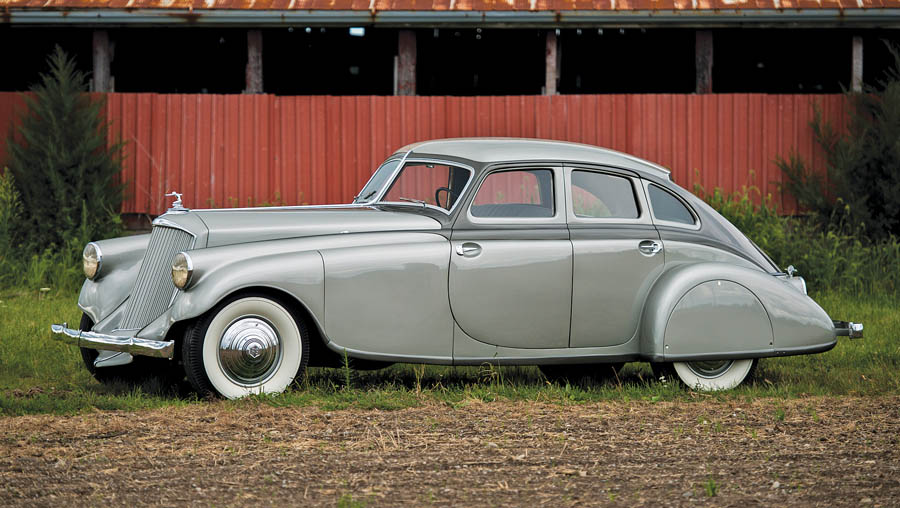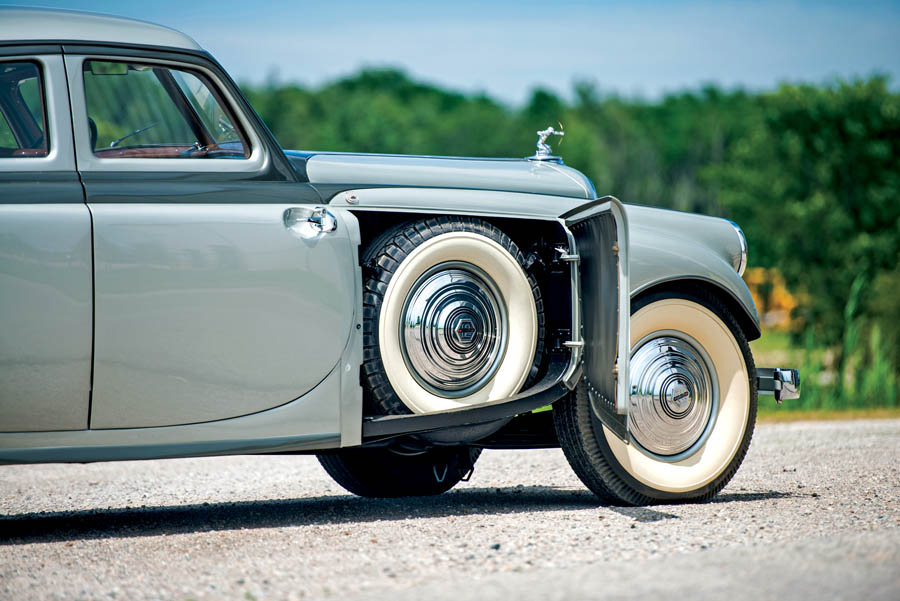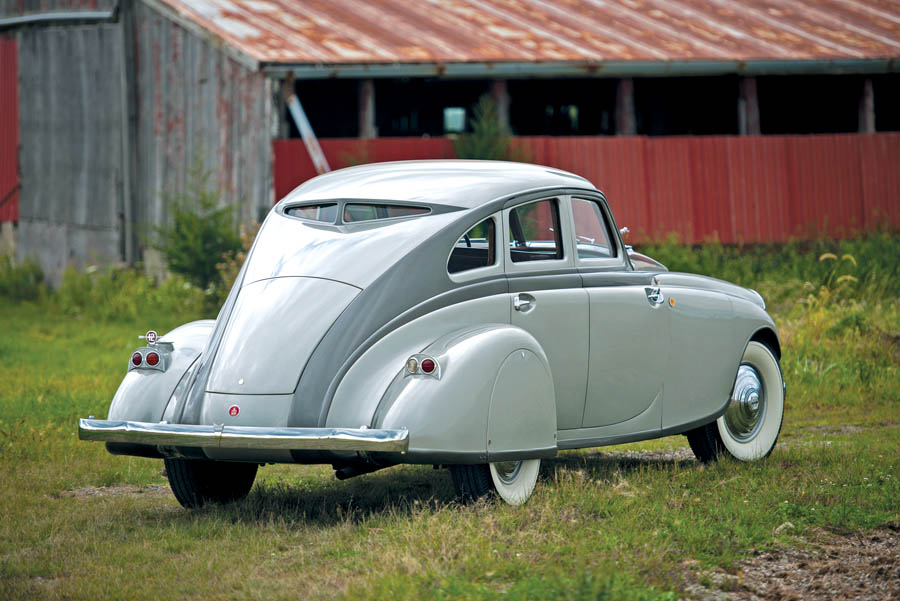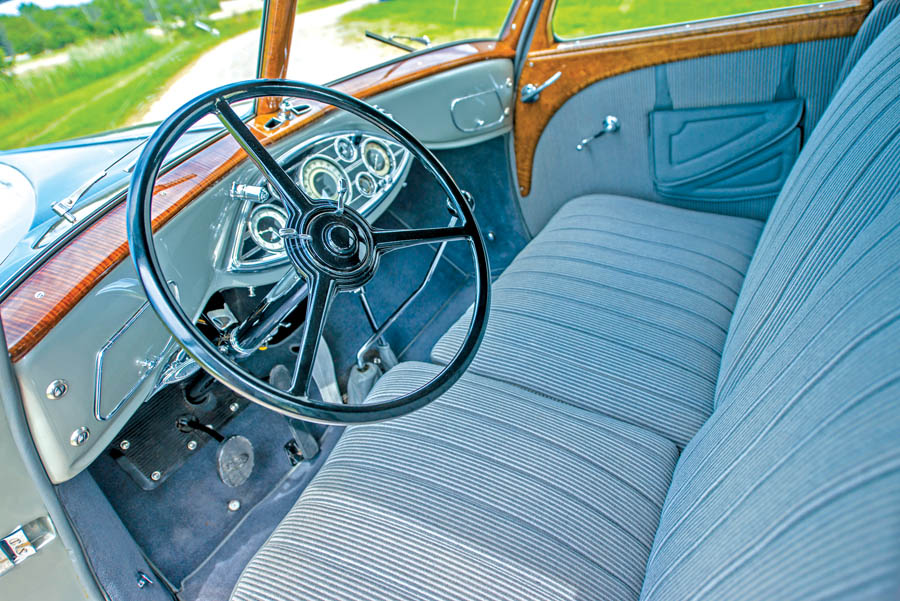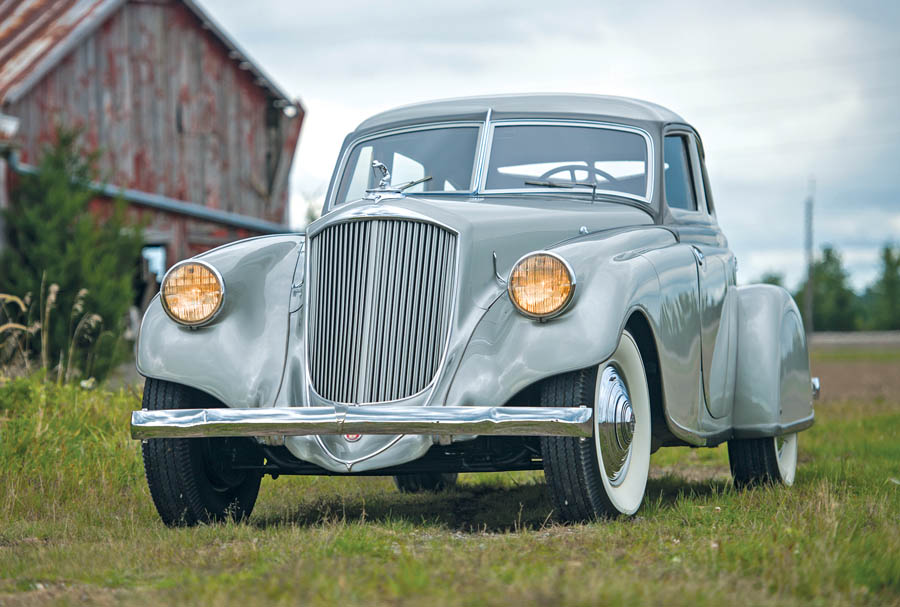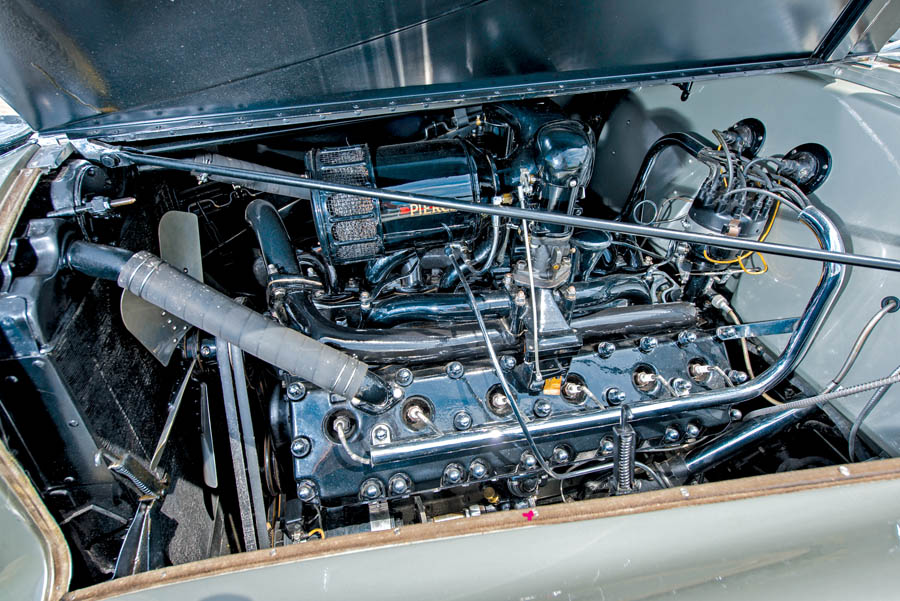SCM Analysis
Detailing
| Vehicle: | 1933 Pierce-Arrow Silver Arrow |
| Years Produced: | 1933 |
| Number Produced: | Five |
| Original List Price: | $10,000 |
| SCM Valuation: | $2,310,000 (this car) |
| Distributor Caps: | $500 |
| Chassis Number Location: | Metal plate on side of frame near front spring |
| Engine Number Location: | Right side of engine |
| Website: | http://www.pierce-arrow.org |
| Alternatives: | 1933 Duesenberg “Twenty Grand,” 1933 Packard “Car of the Dome,” Cadillac V16 Aero-Dynamic coupe |
| Investment Grade: | B |
This car, Lot 265, sold for $2,310,000, including buyer’s premium, at RM Sotheby’s auction in Hershey, Pennsylvania, on October 6, 2017.
The streamlined Silver Arrow was actually designed at General Motors, not Pierce-Arrow. The idea had originated from General Motors’ Art and Colour section as a result of a “Car of the Future” contest Harley Earl had conducted with his staff. Phil Wright, a young stylist at GM, submitted his idea, but his career at GM was short-lived, as he became a victim of their Depression-affected budget.
Wright took his design with him. He constructed a 1/8th-scale model at his home and presented the idea to his friend, Roy Faulkner, who was a vice president at Pierce-Arrow. The design was well received, and Wright was hired and sent to South Bend, home of Studebaker and parent of Pierce-Arrow, to assist in the car’s development. As Studebaker had greater resources, they were tasked with bringing the project to fruition.
Streamlines and deadlines
The dramatic Silver Arrow was to place Pierce-Arrow at the forefront of the luxury-car market. But the team responsible for it was faced with the almost impossible task of constructing the car in just three months, as it was to be introduced at the New York Automobile Show. Their slogan was, “It gives you in 1933 the car of 1940.”
The Silver Arrow utilized the production 175-horsepower V12 Pierce-Arrow engine and the traditional “frog-eye” headlamp design, but aside from that it was a completely new car. It had a steel turreted hand-formed roof, spare tires hidden in the side compartments of the front fenders, recessed pull-out door handles, and enclosed running boards. Aerodynamic styling was featured throughout.
Ten were planned on the 139-inch Pierce-Arrow chassis, but that was later revised to five. After the team hit their tight deadline, this car shipped to New York on New Year’s Day 1933, with Number 2 being shipped to Buffalo several days later. The third was shipped to Chicago for the World’s Fair “Century of Progress” exhibition, while the final two were sent to Buffalo in February and were used for promotional purposes. According to Paul Auman, superintendent of the body prototype department, all were painted a two-toned tan with the darker shade above the belt line.
A rare original
Unfortunately, the timing could not have been worse. Here was a $10,000 car, introduced just as Studebaker was heading for receivership. President Roosevelt had also just declared a National Bank Holiday, which presented a bleak backdrop for introducing an expensive streamlined automobile. Plans for making the Silver Arrow a production car were dropped and the five cars were sold off.
This car, chassis no. 1, spent two decades owned by a couple of Crazy Water distributors before becoming part of James Brucker’s famed Movie World Cars of the Stars Collection. It subsequently joined the Blackhawk Collection before being acquired by Thomas Derro in 1996. Restored during its tenure at the Blackhawk Collection, it continues to impress, with two small cracks on the right side of the hood as the only issues. It is stated to be the best-preserved, most authentic and most complete of the three remaining examples. During Derro’s two-decade ownership, it received several Best of Show awards as well as other prominent expressions of recognition.
Bargain at any price
RM Sotheby’s, at their 2015 New York “Driven by Distinction” sale, sold Silver Arrow #3, which had been the Chicago Century of Progress car, for $3,740,000. It had once been part of the famed Henry Austin Clark Jr. Collection and prior to that it was owned by legendary collector D. Cameron Peck, who had acquired it for all of $250.
A million-and-a-half-dollar disparity in sale price in two short years leads to the possible conclusion that someone overpaid for one or the other was a screaming deal. Well, I don’t think either scenario is the case. That was then, this is now, and the earlier sale was at the apex of the market taking place in a glitzy setting. The price paid here reflects the current market, but being a remarkable piece of automotive history, a Silver Arrow is a bargain at most any price. ♦
(Introductory description courtesy of RM Sotheby’s.)
